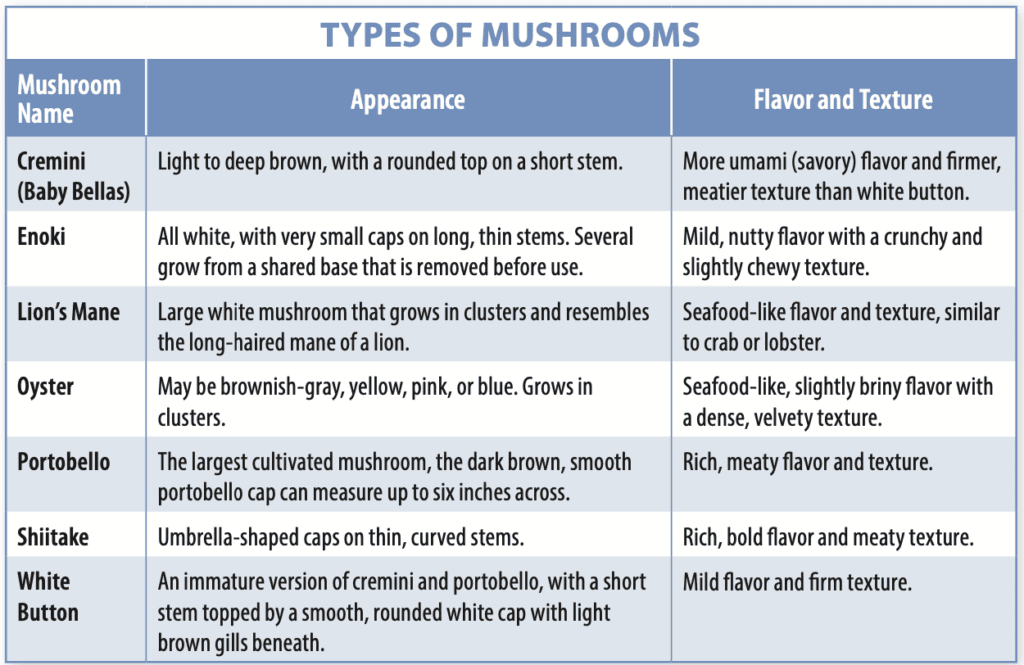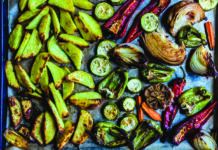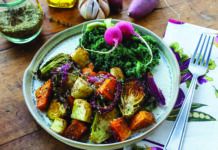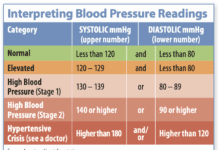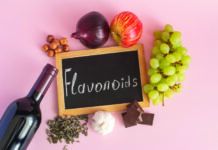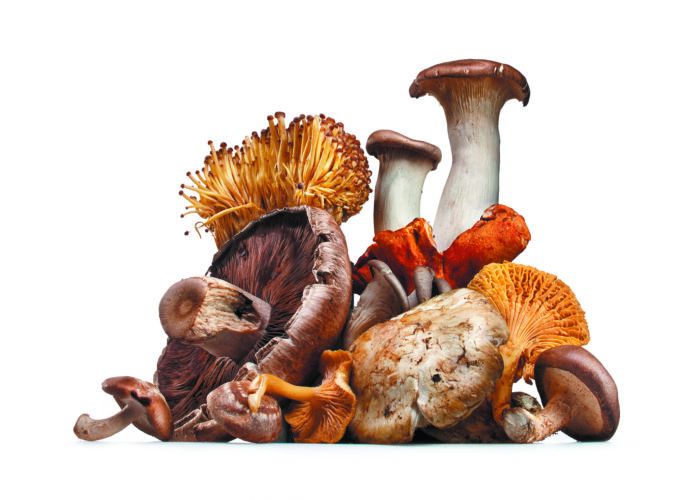With their savory umami flavor, earthy aroma, and hearty, meaty texture, mushrooms are having a “moment” in the food scene. They are nutritious, versatile, and easy to cook with at home.
What are Mushrooms? Mushrooms are the fruiting body of a fungus. One of the most sustainably produced foods in the U.S., mushrooms require only a small amount of water and land compared to other foods.
There are thousands of mushroom species around the world (some edible and some poisonous). White button mushrooms are most common in the U.S., but there are many more, each with its own size, shape, texture, and flavor. See “Types of Mushrooms” for more information.
Nutrition. Mushrooms may not be plant or animal, but they provide many of the nutritional benefits of both. Much like human skin, if mushrooms are exposed to ultraviolet (UV) light vitamin D is produced, making them the only natural non-animal food source of this under-consumed vitamin. (Mushrooms grown in the dark will not have vitamin D. Look for information on package labels or ask the grower at farmers’ markets.)
Although mushrooms do not supply much protein—100 grams (g) of white button mushrooms has 3g protein, while 100g of chicken breast has 22g—the protein they do provide is “complete.” This means mushrooms, like animal proteins, have all the amino acids the human body needs, which is rare in non-animal foods. They also provide some dietary fiber and potassium, and are a good source of selenium, riboflavin, and niacin (although most U.S. adults already get enough of these nutrients).
How to Handle. Select mushrooms that look fresh and have a firm, smooth surface. For richer flavor, choose varieties with exposed gills, such as portobello and shiitake. Before using, wipe mushrooms clean with a damp paper towel, or rinse gently with water and pat dry. The stems are edible and come with lots of flavor, but cut them off if they are tough (consider chopping and adding to a mixed dish). Keep mushrooms in their original packaging or a paper bag in the refrigerator for up to one week.
Get Cooking! Mushrooms can be eaten raw or cooked. They work well in soups, salads, wraps, pasta dishes, stir-fries, whole-grain sides, sheet-pan recipes, as pizza toppings, or chopped as a replacement for some or all of the ground beef in recipes like Bolognese sauce and sloppy Joe’s.
One simple way to enjoy mushrooms and reap the most flavor is in a quick sauté. Heat a small amount of plant oil in a skillet over medium-high heat. Add one or several mushroom varieties, whole or sliced, along with minced garlic and sliced green onion, and cook until just softened and fragrant, they will begin to give off their liquid. Serve sauteed mushrooms as a side dish or mix into whole grain dishes, pastas, and egg dishes (scrambles, omelets, and frittatas). Stuff large white or cremini mushroom caps with a mixture of minced stems, whole grain breadcrumbs, parsley, and just enough plant oil to hold the mixture together, top with Parmesan cheese, and bake. Or simply add raw mushrooms to salads and wraps, or serve them as an appetrizer with dip. Enjoy!
➧ Explore! Check out the mushroom varieties sold at your local grocery store and farmers’ market. Choose fresh, smooth caps.
➧ Prep. Wipe away dirt with a damp paper towel or rinse and pat dry. Trim any tough, woody stems, chop and add to mix dishes.
➧ Store Smart. Keep mushrooms in their original packaging or in a paper bag, refrigerated, for up to a week.
